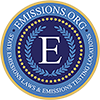Last updated on April 26th, 2018
The state of Georgia requires its residents to have their vehicles emissions tested. There are many commonly asked questions concerning the Georgia emissions program. In this section we will review some of the most frequently asked questions and their answers.
If I buy a new vehicle do I need to have my emissions tested?
If you are buying a new vehicle which was manufactured within the past three years you do not currently need to have its emissions tested.
Does everyone in Georgia need to have their emissions tested on their vehicle?
If you are a resident in one of the following counties you are required to participate in the Georgia emissions program: Cherokee, Clayton, Cobb, Coweta, DeKalb, Douglas, Fayette, Forsyth, Fulton, Gwinnett, Henry, Paulding or Rockdale County.
What if I am buying a used car?
If you are purchasing a used car and you live within one of the counties that is required to participate in the emissions program, the seller is required to have vehicle pass an emissions test at the time of the sale. The seller is not required to give you a copy of the Vehicle Emissions Inspection report. The report is on record in electronic format at the tag office.
What I purchased a vehicle from out of state?
If you purchased a vehicle from out of state you must have the emissions tested within thirty days before you will be allowed to register your vehicle in the state of Georgia. This applies to residents who live in one of the aforementioned counties.
Are there any exemptions?
If you are a senior citizen who is sixty five years old or older and you meet certain requirements concerning how many miles you drive annually and the vehicle you may qualify for an exemption.
If your vehicle is twenty five years old or older it is exempt from emissions testing.
What if I have moved to one of the counties that require emissions testing?
If you moved to one of the counties that requires emissions testing you must have it done within thirty days and you must get your vehicle registered within thirty days also.
How much does it cost to have an emissions inspection for my vehicle?
The cost for an emissions inspection is between $10 to $25. When you pull into a station there will be an emissions inspection sign which will have the fee posted on it.
Can I do anything to prepare my vehicle for the emissions inspection?
If your ‘check engine’ light is on it is recommended you have a service center/mechanic take a look at it to determine and fix the cause.


